Fig. 22.1
Standards for acceptance: the patient is accepted by a smiling staff. He/she is referred to an assistant, who brings him/her to the doctor’s office
Medical visit: the assistant brings the patient to the visiting room. The doctor introduces himself/herself. After that, the first step is to discuss the three different aspects of the organisation, which are summarised in three consent forms. The first consent form is about Privacy. The patient accepts that his/her personal data are collected by the office (Fig. 22.2), and the doctor can explain the high level of security and confidence of the database.
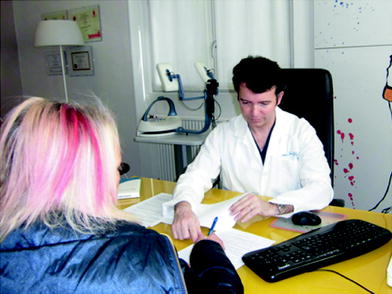

Fig. 22.2
The doctor introduces himself/herself. After this, the first step is to discuss the three different consent forms
The second consent form is the Quality consent form (AQ Standard Form). By this form, the quality standards are presented and explained to the patient.
If the patient has a coupon, he/she has to sign a third consent form. In this consent form, he/she is informed that he/she can have his money back. This option must be clearly explained when selling the coupon, but it must be also summarised at the time of the first visit.
The doctor starts the anamnesis, asking the patient about allergies, drugs, diseases, previous admission in hospital, previous aesthetic treatments, etc. All the information is registered on PRM.
The patient’s makeup is removed.
The patient’s exam is based on facial observations and palpation in order to evaluate the presence of filler, lumps, etc. (Fig. 22.3).
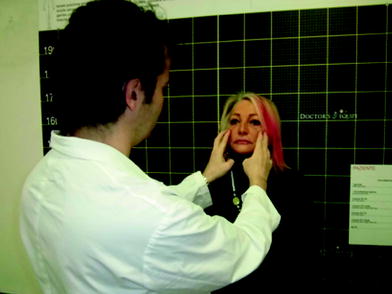
Fig. 22.3
The patient’s exam is based on facial observations and palpation in order to evaluate the presence of filler, lumps, etc
A photographic analysis is performed with Canfield Camera System, and pictures are taken at 180, 45 and 90° with standard light (Fig. 22.4).
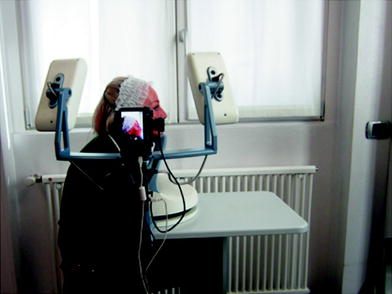
Fig. 22.4
A photographic analysis is performed with canfield camera system, and pictures are taken at 180, 45 and 90° with standard light
In some cases (lumps, etc.) it should be useful to perform an ultrasound analysis (Fig. 22.5).
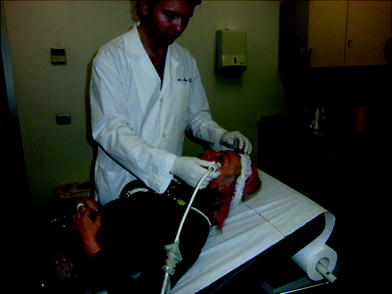
Fig. 22.5
In some cases (lumps, etc), it should be useful to perform an ultrasound analysis
In order to discuss treatment options, it is very useful to ask the patient to bring some old pictures. This will make it easier to study the age-related changes.
The old pictures are compared with Canfield analysis (Fig. 22.6).
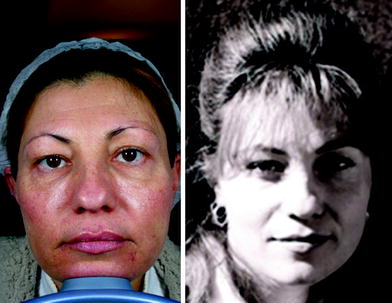
Fig. 22.6
In order to discuss treatment options, it is very useful to ask the patient to bring some old pictures
The treatment program is decided with the patient.
The informed consent is discussed. Treatments, potential results, adverse effects are evaluated (Fig. 22.7).
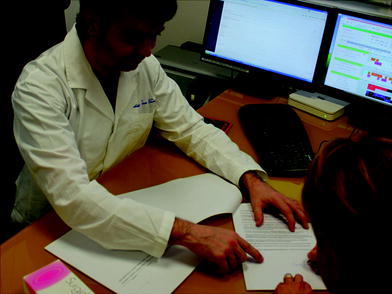
Fig. 22.7
The informed consent is discussed. Treatments, potential results, adverse effects are evaluated
The blister container of the product is opened in front of the patient. Syringes, package insert, traceability labels and needles are enclosed in the box.
The traceability labels are shown and explained to the patient (Fig. 22.8).
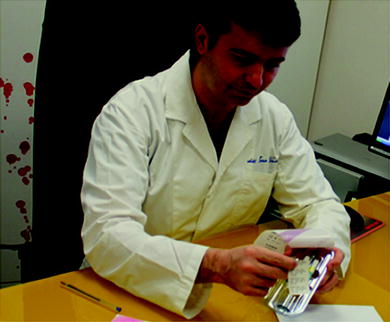
Fig. 22.8
The traceability labels are shown and explained to the patient
Two copies of traceability labels are glued to two consent forms.
The patient signs both consent forms. One consent form is archived, and the other is given to the patient. The traceability labels allow the patient to know the product name, the production and expiration dates (Fig. 22.9).
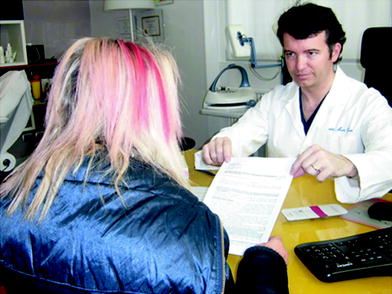
Fig. 22.9
Two copies of traceability labels are glued to two consent forms. One consent form is archived, and the other is given to the patient
The treatment is performed.
After the treatment, the patient is accompanied to the administration room. The payment does not occur in front of other patients.
The assistant accompanies the patient to the reception to schedule a follow-up appointment with the PRM system. The PRM system allows to choose the date and the hour of the appointment and to confirm it by mail or sms.
22.3 Customer Relationship Management or PRM
Mario Goisis, Andrea Goisis
Patient management can be simplified by using a Customer Relationship Management software (CRM). A well-built CRM makes it possible to raise the level of services provided to patients, maintain an easily searchable historical patient archive and reduce administrative costs.
The move from a traditional organisational system to the use of a CRM may initially be laborious and complicated: creating the entry for each customer, learning to use the system and, above all, managing to change one’s habits, requires commitment and a degree of constancy that should not be underestimated. The benefits are, however, many, and we will try to illustrate them clearly in the following sections.
The Doctor’s Equipe medical centres use an evolved CRM (internally renamed PRM, or Patient Relationship Management Software) that make possible to keep track of patients’ purchases over time, of the services purchased, the purchase dates, and notes regarding the patients’ personal history, as well as information on how they heard about the centre. Using the PRM, it is also possible to obtain precise figures on the various aspects that may be of interest to the centre, in order to optimise management and improve treatments.
22.3.1 Key Points of PRM
Stay updated, free articles. Join our Telegram channel

Full access? Get Clinical Tree








